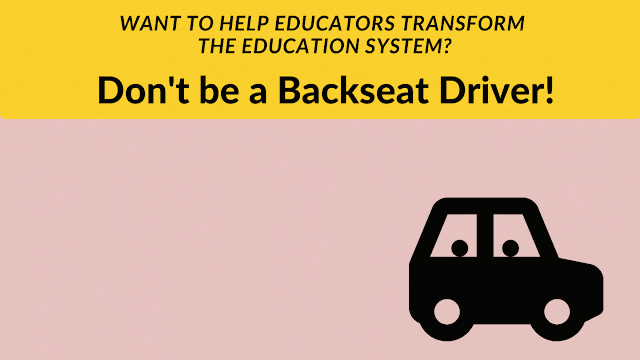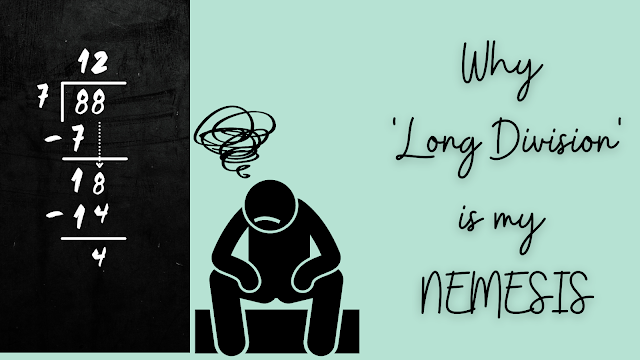What-Why-How: The structure you need to communicate any idea powerfully
The idea: ‘What-Why-How’ - a structure to communicate any idea powerfully. This works well for Teacher Professional development, Classroom Lessons, Team communication on new initiatives or programs.
The What-Why-How structure has been my go-to structure for communicating important ideas to anyone. I have been using it for 5 years now and it has improved the quality of my communication tremendously.
Let me use the What-Why-How structure to describe the What-Why-How structure!
WHAT is the What-Why-How structure?
What-Why-How is a simple structure used to organize and communicate ideas powerfully. Here is a description of each part:
What: This is where you clearly and simply present the big ideas or key components of your message. You may expand on each of these to explain with more details or examples.
Why: Here is where you explain Why the idea is important/ what is the rationale for doing something and what positive impact it could have.
How: Here is where you explain how to implement your idea or take action.
WHY is the What-Why-How structure useful?
It helps you represent it clearly for the brain to process.
Far too many people present ideas in convoluted ways. People need a simple mental structure to assimilate the content. Refining your ideas in a What-Why-How format forces you to simplify the structure.
Further, trying to present your ideas into a simple ‘What’ will encourage you to refine your ideas down to it’s essential core and filter out all the fluff. People need a simple, sticky mental framework for organizing all the information you are giving them. For more on keeping it simple read ‘Simplicity’ in ‘Made to Stick: Why some ideas take hold and others die’ by Dan Heath and Chip Heath
It helps you provide a clear purpose for the brain and heart to be inspired.
Many people fall into the trap of presenting endless commentary of ‘what needs to be done’ or ‘how it needs to be done’, without providing a rationale for ‘Why you are doing it’. People need to know Why something is important to do and what impact it will have when they hear a new idea so that they can genuinely see value in it themselves. The ‘Why’ section ensures you do that. For more on this watch Simon Sinek’s TED Talk ‘Start with Why’ if you have not already!
It helps you incorporate a ‘call to action’ so the brain, heart and body can act.
Another issue that comes up - Leaders or presenters share a very valuable idea with teachers or teams but provide them with little guidance on how to do it, or even what first steps they might take towards actioning it. The ‘How’ stage helps you think about how people can put the idea or plan into action. Without this usually even a good idea remains a theoretical idea and few people are empowered to act.
HOW can you use the What-Why-How structure?
There is a lot to be said here, but below are a few tips to get you started.
How to define the 'What':
I think figuring out your ‘what’ i.e. getting to the 2-5 core ideas in your communication is the hardest part, especially early on. I have seen many school leaders (including myself) struggle with this in the first few years of designing teacher professional development. Remember, keep it simple. It should be a representation / mental model that is easy to recall.
Here are some exercises that help me figure out the ‘What’:
- Turn your key points into a visual model. This will force you to distill your idea down to its core, most essential points. Ideally this should be between 2-5 points, not more. If you find yourself listing too many, you are dissecting it too much and getting too detail oriented or maybe even mixing in the ‘how’ part of your idea.
- Write out one short sentence to describe each of your core points. If the sentence has too many ‘ands’ rewrite it.
- Explain your idea to as many people as you can find. Once you start doing this, you may need resilience (lol). I think my husband has learned to tune me out while automatically nodding his head when I do this. Even if the person isn’t fully listening, telling someone helps you refine your idea.
Here is an example of a simple 'What': Motivation is impacted by 3 factors (1) Mastery (2) Autonomy (3) Purpose (Drive, Daniel Pink)
How to get to the 'Why':
I find that getting to the ‘Why’ is as hard or even harder than defining the ‘What’. And it is equally important, because it is what inspires/motivates your audience to believe in the idea. One common mistake I have seen leaders make (again, including myself) is that we think we have gotten to the core purpose or reason of implementing an idea but instead we are replacing it with surface level, shallow reasons.
The 5 Whys strategy works really well for this. It is typically used for finding the root cause of a problem, but it works just as well for getting to the core purpose for implementing an idea or initiative.
Here is an example: Why should you build teacher motivation? Research shows Teachers have the largest impact on student learning. And higher teacher motivation means better teachers.
So, Motivated teachers → Better Teachers → Better student learning
How to plan the 'How':
This is where you lay out the plan or at least concrete first steps towards action. The more specific and actionable your advice, the better. I sometimes try to give team members time to take the first steps during the session itself if possible.
Here is an example: How can you build Teacher Motivation? 1) Build Mastery by providing opportunities for teachers to receive feedback on their practice and professional development. After explaining details I would ask teachers to write down one concrete way in which their own expertise can be improved.
For teachers looking to integrate a What-Why-How structure into their lessons the Universal Design for Learning Guidelines are a fantastic, comprehensive toolkit for putting this into practice!
I hope that with some practice, this structure proves to be as useful for you as it has been for me!






Comments
Post a Comment